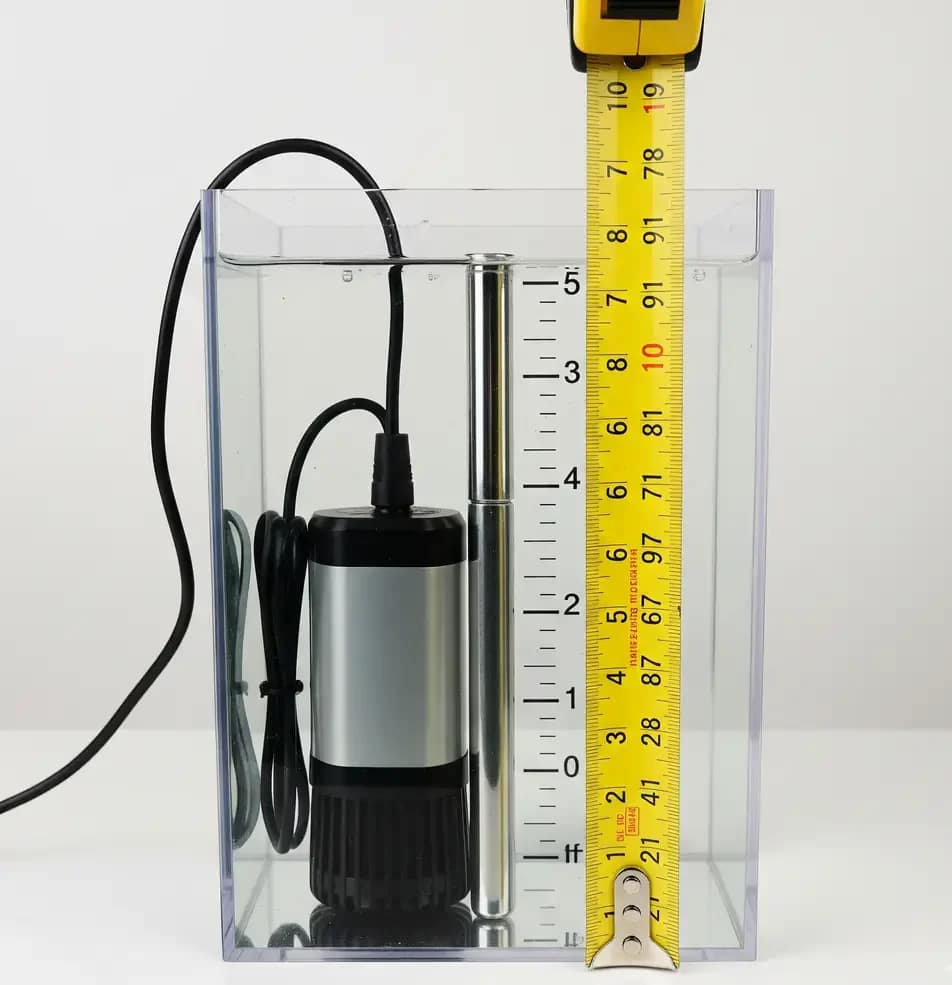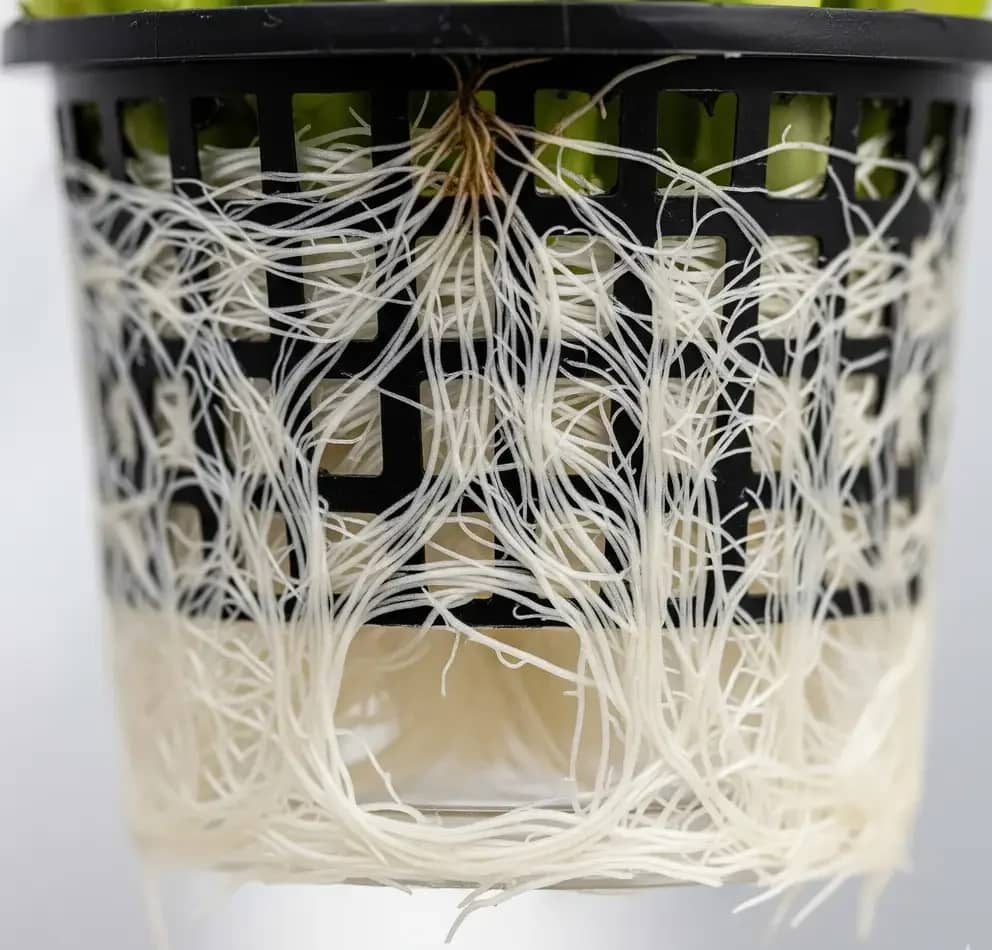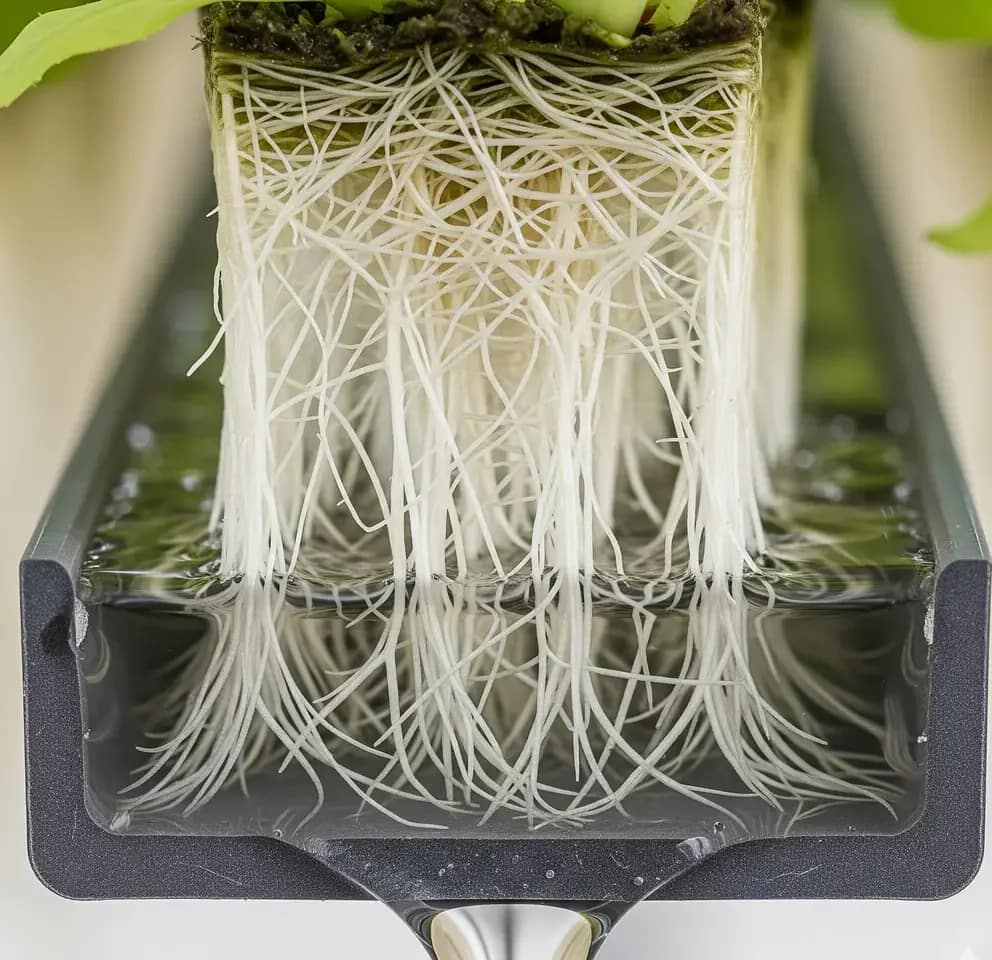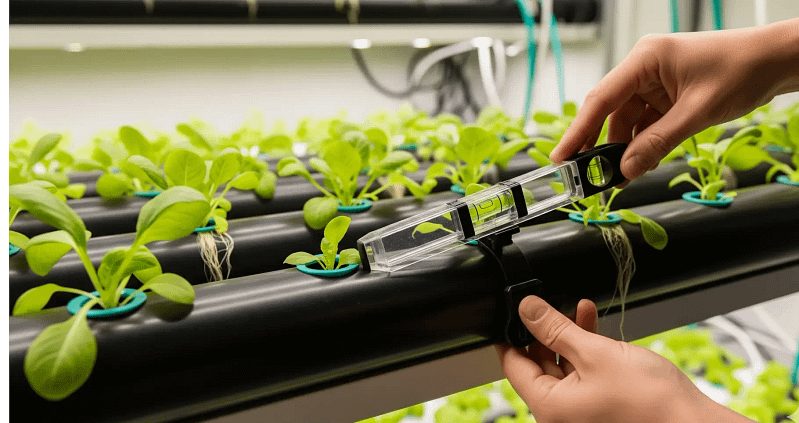My First NFT Hydroponic Disaster (and What It Taught Me About Flow Physics)
I’ll never forget the night I came home to a silent, humming disaster. The entire basement floor was a shallow, glistening lake. My pride and joy—a custom-built NFT hydroponic system that was supposed to be my masterpiece—had failed. The problem wasn’t a leak, but a root mat so dense and unforgiving it had acted like a cork, backing up the entire system. Gallons of nutrient solution spilled over the top of the channels, silently, methodically, for hours. It was a watery grave for my ambitions and a $600 lesson in fluid dynamics. I spent the next two days with a shop vac and a profound sense of failure, vowing to never let an honest beginner make the same mistake. That’s why you’re here.
This guide isn’t just about growing plants. It’s about building a fortress against the forces of nature that will conspire to flood your garage, starve your plants, and break your spirit. We’ll get into the weeds, literally and figuratively, with the cold, hard numbers that make a Nutrient Film Technique (NFT) system work—or violently fail. You’ll learn the crucial math, the secret specs, and the unforgiving reality of what happens when you get it wrong. It’s a bit like plumbing meets astrophysics, but with more dirt under your fingernails.
WARNING: Pump failure is a real threat. Without a continuous flow of nutrient solution, your plant’s roots will dry out and die in as little as two hours. The links in this post are here to help you get the right gear, but nothing replaces vigilance. Always use a GFCI outlet for your pumps. We may earn a commission if you make a purchase.
The Physics of Flow: Why Your Channel’s Slope Isn’t Negotiable
Let’s be honest. Setting up your channels so they are perfectly level seems easiest. But water doesn’t want to sit still. It wants to go downhill. And if it sits still in your NFT channel, your plants will die. Bad slope isn’t a minor flaw; it’s a death sentence for your crop. It’s the difference between a pristine mountain stream and a stagnant swamp.
The Golden Rule: Finding the 1:30 to 1:40 Slope Sweet Spot
The golden rule I learned with that flooded basement? A channel needs a gentle, consistent slope to move water and deliver oxygen without creating a deep river. Think of it this way: your roots need access to both the nutrient film and the open air in the channel for proper gas exchange. A deep puddle drowns them. A bone-dry channel leaves them to desiccate. You need a Goldilocks slope—just right.
My recommendation is to aim for a 1-inch drop for every 30 to 40 inches of channel length. This is a crucial metric, what aerospace engineers would call a “non-negotiable parameter.” Get this wrong, and your system will either pool water and drown your plants, or it will drain too fast, leaving roots high and dry.
I once spent an entire Saturday building a beautiful, 20-foot NFT channel. I was so proud of the clean lines and tight connections. But a single degree of miscalculation in the slope meant that the first 5 feet of the channel were a stagnant lake, and the last 15 feet were a barren desert. It was a design marvel that produced zero edible food. This is why you must measure.
NFT Slope Failure Modes: What Happens When You Get It Wrong
Your secret weapon for this? A simple, cheap bubble level. It’s a tool that prevents garage tsunamis. Use it. Use it often.
The key to understanding this is visualizing the battle between gravity and surface tension. Too steep, and the water flows so quickly it doesn’t form a nutrient film. Too shallow, and the water pools up, creating a deep film that suffocates the roots. This is especially true in systems that use long channels.
Let’s look at the failure modes:
| Parameter | Ideal Range | Failure Threshold | What Happens at Failure? |
| Slope | 1:30–1:40 | <1:45 (Too Shallow) | Water pools, leading to oxygen starvation and root rot. |
| >1:25 (Too Steep) | Water drains too quickly, roots don’t absorb enough nutrients or water. |
You need to use a bubble level on every section of every channel. Adjust your stand, your supports—whatever it takes—to get that slope just right. It’s cheaper than replacing waterlogged drywall and a whole lot less heartbreaking than watching your plants wilt.
Flow Rate Math: Hitting the 1-2 Liters Per Minute Sweet Spot
The next key piece of the puzzle is the flow rate. How much water should your pump move per minute? Too little, and the roots at the end of the line get starved. Too much, and you’re wasting energy and creating unnecessary noise and splashing. It’s a delicate balance.
For leafy greens like lettuce, kale, and spinach, which are fantastic for an NFT system, a good rule of thumb is a flow rate of 1–2 liters per minute per channel. If you have multiple channels branching off a main manifold, the total flow rate from your pump needs to be the sum of the flow rates for each individual channel.
How to Calculate the Perfect Pump Size for Your System
If you’re a beginner, it’s easy to get lost in the numbers. GPH? LPM? What does it all mean? Here’s the simplified math that saved me.
For a single channel, a basic formula is: GPH = Channel Length (ft) x 3. This will give you a rough estimate of the pump size you need. For a 12-foot channel, you’d be looking for a pump that pushes about 36 GPH. This isn’t a hard rule, but it’s a great starting point for sizing a submersible pump.

Let’s break it down in a table:
| Channel Length (in ft) | Min GPH for 1 channel | Max GPH for 1 channel |
| 4 | 8 | 12 |
| 8 | 24 | 36 |
| 12 | 36 | 48 |
| 16 | 48 | 64 |
Pump Sizing Guide: GPH by Channel Length
Now, let’s address a common question: “What is the ideal flow rate for NFT?” It’s a question I’ve wrestled with. The answer depends on your plants. For leafy greens, the sweet spot is typically that
1-2 L/min per channel. This provides enough nutrient solution to keep the roots happy without creating a raging river that could damage them. It’s also a highly efficient use of water and energy, especially if you’re running multiple channels. The key is consistency. Once you find that sweet spot, monitor it to make sure nothing changes.
Root Zone Warfare: How to Prevent Matting and Floods
Picture your plant roots. Are they healthy, white, and fibrous? Or are they a tangled, brown, slimy hairball from the shower drain? If your roots resemble the latter, you’ve lost the war. Root matting is the quiet killer of NFT systems, often a direct result of poor flow management. As roots grow and fill the channel, they become dense and block the nutrient flow. The plants at the beginning of the channel thrive, while the ones at the end get nothing and slowly perish. It’s a brutal reality.
My most catastrophic failure in my early days was a vertical system where kale roots completely strangled the pump. It wasn’t a clog, per se, but an intricate weave of aggressive root matter that sucked the life out of everything. It felt like trying to grow plants in a wet carpet. That root mat was a biological supervillain. The plants were fighting for their lives, and the strongest one won, at the expense of all the others.

The Simple Art of Root Pruning: Your Defense Against Clogs
The battle tactic? Root pruning. It’s simple, it’s brutal, and it’s effective. You must become a meticulous gardener, checking root zones every 10–14 days. When a root starts to get too long or too dense, a quick snip with a pair of shears [Affiliate Link: Vivosun Micro-Tip Pruning Shears] will keep it in check without hurting the plant. You’re cutting the plant’s hair, not its head. Cut off about a third of the root mass, and do it quickly. The shock is minimal, and the benefit is huge: open channels, happy roots, and a healthy crop.
This is especially critical for plants with aggressive root systems like kale or Swiss chard. My pro tip? When you set up your net pots, leave a 2-inch air gap between the bottom of the pot and the nutrient film. This encourages the roots to grow downward toward the water, creating a nice, clean root zone that is less likely to become a tangled death trap. This small gap prevents root strangulation and promotes proper aeration from the start.
Film Thickness Demystified: The Critical 1mm Rule
Now, for a concept that sounds overly technical but is secretly the most important of all: nutrient film thickness. This isn’t a river; it’s a film, a delicate sheet of nutrient-rich water. Its thickness is absolutely critical for root health.
The ideal thickness is around 1mm. I’ve heard it described as thinner than a credit card, thicker than a piece of paper. It’s just enough liquid to provide nutrients while leaving the rest of the root system exposed to the oxygen in the air.
This is why a slight slope is so important. A perfectly level channel would create a deep pool of water, which would drown the roots. But a properly sloped channel will create that thin film of water that washes over the root tips, delivering the goods and then draining away, allowing the roots to breathe.
I once mistakenly had a channel that created a deep film, maybe 5mm deep. I figured, more water, more nutrients, more better, right? Wrong. Within days, the roots started to brown and get slimy. They were literally suffocating. So I’m telling you now, a thin film is not a lack of care—it’s the secret to providing your plants with the dual sustenance of water and air.

The failure threshold is swift and unforgiving. If your film depth is over 5 mm, you risk oxygen starvation. The plants will look thirsty and sad even though they are drowning. It’s one of the most frustrating things to see, and it is entirely preventable with good design.
The Backup Protocol: Essential Overflow Drains & Fail-Safes
NFT systems are fantastic, but they are fragile. A power outage, a clogged pump, or a rogue root mat can bring the whole operation to a grinding halt. You need a backup plan, an insurance policy against the chaos of fluid dynamics.
My recommendation? Overflow drains and fail-safes. The concept is simple: design a backup into your system so that when a failure occurs, the water has somewhere to go besides your floor. A simple tee-off from your drain lines is an excellent way to do this. If a channel clogs, the water will overflow into the other channel or drain line, giving you a bit of time to fix the problem without flooding your workspace.
It’s what a good plumber does: assume failure. Build a system that can fail gracefully. It’s what I wish I’d done in my basement. A simple overflow T on the drain would have saved me days of work and a lot of money. It’s 200% flood insurance for the price of a single PVC fitting.
A common question I get from beginners is: “What are common NFT setup mistakes?” The list is long, but these are the top three, all of which could be solved with proper fail-safes:
- Improper Slope: As we’ve discussed, a bad slope leads to pooling or dry roots.
- No Overflow Drains: When a channel clogs, the water has nowhere to go but over the top, straight to your floor.
- Under- or Oversized Pump: A weak pump won’t lift water high enough, and an overpowered pump can cause leaks and cavitation.
By adding a simple overflow drain, you buy yourself time. You also build a system that tells you when it’s failing before it’s too late. When you hear the sound of an overflow drain, you know to get your tools out and find the problem before your plants suffer.
NFT Hydroponics FAQ: Your Flood Prevention Guide
What is the most common cause of a flood in an NFT system?
The most common cause of a flood is a root mat. As a plant’s roots grow, they can become so dense that they act like a cork, backing up the entire system. Gallons of nutrient solution can then spill over the top of the channels, silently, methodically, for hours, which can cause significant water damage.
What is the ideal slope for an NFT channel, and why is it so important?
The ideal slope is a 1-inch drop for every 30 to 40 inches of channel length. This is a crucial metric that ensures the water doesn’t pool and drown your roots or drain too quickly and leave them to desiccate. You should use a simple bubble level on every section of every channel to ensure your slope is just right.
How do I calculate the right pump size for my NFT system?
You can’t just guess. For a single channel, a good starting formula is: GPH = Channel Length (ft) x 3. This gives you a rough estimate of the minimum pump size you need to overcome friction and lift, ensuring a consistent flow rate of 1-2 liters per minute per channel.
What is the danger of a nutrient film that is too deep?
A nutrient film that is too deep, over 5mm, will suffocate your plant’s roots. Roots need access to both the nutrient solution and the open air in the channel for proper gas exchange. A deep puddle of water will drown them, leading to a slimy, brown root mass.
How often should I check and prune my plant roots in an NFT system?
You should inspect your plant roots every 10–14 days. When a root starts to get too long or too dense, a quick snip with a pair of shears will keep it in check. This is a brutal but effective tactic that prevents root matting and keeps your channels clear for nutrient flow.
What is the purpose of an overflow drain in an NFT system?
An overflow drain is a critical failsafe that gives you an insurance policy against floods. It’s a simple tee-off from your drain lines that gives water somewhere to go when a channel clogs, buying you time to fix the problem before your entire reservoir spills onto the floor.
Affiliate Arsenal: The Gear That Survived My Root Wars
I’ve had a lot of gear come and go in my root wars. Some things survived, some didn’t, and some were simply too loud or inefficient for me to keep around. These are the tools that have earned their place in my workshop—the ones I trust because they’ve passed the ultimate test: survival.
Solves: Flow starvation in 12ft channels.
Verdict: This thing lifted water 15 feet without choking and ran quietly for over a year. The noise level is a tolerable hum, not an angry buzz. The price point is cheaper than replacing waterlogged drywall.
- High Yield and Quality: Soilless cultivation with nutrient film can meet the production potential of crops; Compared wit…
- With Timer to Save Effort: This hydroponic growing system kit of PVC has a timed circulation system; The default setting…
- Easy to Assemble & Use: This hydroponic gardening system is extremely simple to assemble and use; Great for beginners an…
Solves: Seedlings falling over and a general lack of support.
Verdict: The 3-inch size is perfect for everything from lettuce to a young tomato plant. They are wide enough to provide support and don’t restrict root growth. Just make sure you leave that 2-inch gap!
Solves: Untamed root masses.
Verdict: Sharp, precise, and comfortable in the hand. You can snip roots without disturbing the plant too much, which is a key part of the root-pruning battle. Essential.
I’ve learned the hard way that cutting corners on your gear leads to a quick trip to the hardware store for a shop vac. The right equipment is an investment in your success.
Conclusion: Build a System That Fails Gracefully, Not Catastrophically
Let’s be blunt: the goal of an NFT system isn’t just to grow plants. It’s to manage the relentless, physics-driven desire of water to escape its confines. Your success hinges not on having a “green thumb,” but on becoming a part-plumber, part-physicist who respects the rules of flow, slope, and root aggression.
Forget the marketing hype of “set it and forget it.” A successful NFT rig demands a “build it right, then monitor it” mindset. The 1:40 slope isn’t a suggestion—it’s the law. The 1-2 L/min flow rate isn’t a target—it’s the heartbeat. And root pruning isn’t a optional chore—it’s essential preventative maintenance against a silent, leafy coup that will flood your grow room.
The difference between a thriving garden and a basement aquarium boils down to this: Did you build a system that tells you it’s failing before it’s too late? The gentle gurgle of an overflow drain is a warning. A sluggish flow at the end of a channel is a cry for help. A dense root mass is a ticking time bomb.
You now hold the blueprint to build a fortress, not a floodplain. You have the formulas, the failure thresholds, and the hard-won recommendations for gear that won’t quit on you.
So, take this knowledge, double-check your slope with a bubble level, size your pump with the math, and install that overflow drain. Build with the confidence of someone who has already mopped up the disaster, so you never have to.
Now go build something that works.





